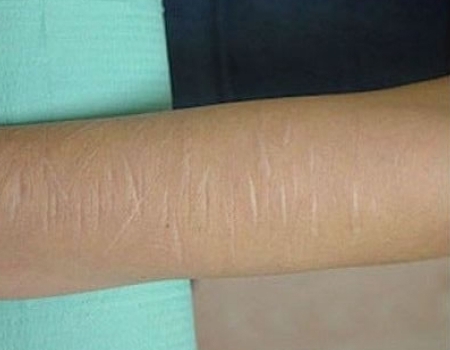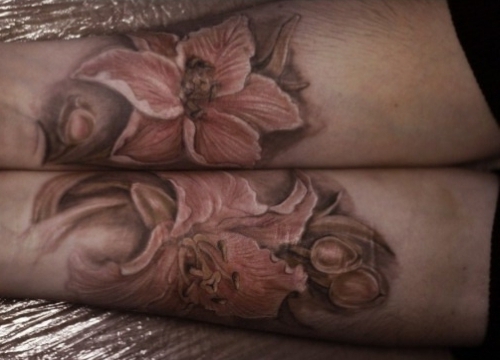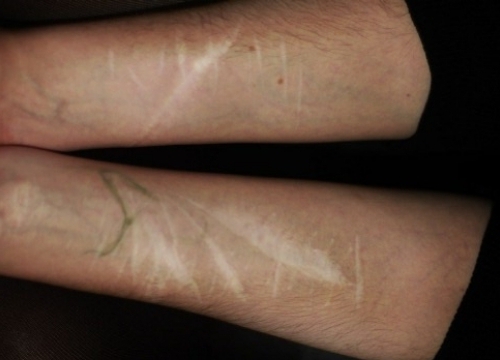Dermopigmentation: masking scars and stretch marks
What defects can be corrected?

We are sure that many permanent makeup masters have faced such client problems as scars, stretch marks and scars. Dermopigmentation technique can mask unaesthetic skin defects
Victoria Lisitskaya, methodologist of the training center "Cosmotrade", winner of the championship "Permanent style of Ukraine", speaker of the scientific and practical conference on permanent makeup "Picturesque Beauty"
The art of permanent makeup is not only an opportunity to emphasize the natural beauty of our client, but also an opportunity to solve more serious problems. Masters are developing very actively, techniques are improving, and at this stage of the development of the industry, we can do more serious work aimed at improving the aesthetic condition of the client's skin. We are talking about paramedical dermopigmentation techniques, such as areola restoration after medical intervention, trichopigmentation, improvement of scars and stretch marks.
It is the dermopigmentation of scars and stretch marks that is the topic of this article.
What defects can be corrected?
It's no secret that scars can significantly spoil the appearance. This topic is especially relevant for those clients who have numerous skin lesions on visible parts of the body. First of all, this procedure is of interest to those who consciously inflicted damage on themselves at one time or another in their lives. For example, cuts on the inside of the arm.
Why exactly them? The answer is quite simple: this condition is always the result of some kind of psychological trauma. And people even after many years experience complexes about this type of damage. As a result, they try to hide it from others in order to avoid condemnation and misunderstanding. They wear long sleeves year-round or try to hide it with a tattoo.
Also, people with stretch marks may experience some discomfort about their appearance. Most often they occur on the abdomen and thighs, but can be found on other parts of the body.
We, as permanent makeup masters, can help people deal with these problems. Unfortunately, not everything can be corrected with dermopigmentation. As you know, the formed scar has a paler tone in relation to the surrounding skin (the exception is keloid scars, which have a darker color). There, the process of melanin production is disrupted, and in the summer the scar becomes more noticeable. Accordingly, we can equalize the shade of the scar and the surrounding skin. But do not confuse color and volume: if the scar and stretch mark have a noticeable volume or, conversely, its lack of volume, then it will not be possible to completely hide the defect with the help of color correction.
You can only significantly improve the appearance.
What is scar tissue? With significant damage, the skin cannot fully recover to its original state, healthy tissue is replaced by connective tissue.
Scars are:
- atrophic - the so-called minus tissue, when there is a small depression in the skin;
- normotrophic - when there is a bulge or scar flush with the rest of the skin;
- keloid - very prominent dark-colored scars, tissue hypertrophy.
You can work with atrophic and normotrophic scars. Work is prohibited on keloids, as trauma can provoke their further growth.
Work is possible only on a fully formed scar, ideally not earlier than one and a half years after the injury.
Pigments are recommended to use those that are designed specifically for paramedical purposes.
At the same time, choose a shade individually for the skin color of each client. When choosing a needle, I recommend using a unit, as it gives the best control over the scar. Do not try to darken the scar much during the first procedure, because there is always the opportunity to add intensity to the corrections, otherwise you risk getting dark areas instead of pale areas.
Always treat this category of clients with care and understanding, and an excellent result will not be long in coming. Beautiful work to you and your clients!
The material was first published in Permanent No. 4(12)/2018



